Zuclopenthixol (Cisordinol, Clopixol, Acuphase) is an antipsychotic drug used to treat psychotic episodes, especially schizophrenia.
The medication is blocking many receptors in the brain, including dopamine receptors, which control behavior and mood. Schizophrenia and other psychotic illnesses are caused by excessive dopamine activity in the brain. By blocking the dopamine receptors, the drug is controlling psychotic illnesses, calming the patients, and easing aggression and hallucinations.
- We included 20 trials, randomising 1850 participants. Data were reported for 12 comparisons, predominantly for the short term (up to 12 weeks) and inpatient populations. Overall risk of bias for included studies was low to unclear.
- Zuclopenthixol dihydrochloride versus placebo: Movement disorders (EPSEs) were similar between groups (1 RCT, n = 28, RR 6.07 95% CI 0.86 to 43.04 very low?quality evidence). There was no clear difference in numbers leaving the study early (2 RCTs, n = 100, RR 0.29, 95% CI 0.01 to 6.60, very low?quality evidence).
- Zuclopenthixol dihydrochloride versus chlorpromazine: No clear differences were found for the outcomes of global state (average CGI?SI endpoint score) (1 RCT, n = 60, MD 0.00, 95% CI ?0.49 to 0.49) or movement disorders (EPSEs) (3 RCTs, n = 199, RR 0.94, 95% CI 0.61 to 1.45), both very low?quality evidence. More people left the study early for any reason from the zuclopenthixol group (6 RCTs, n = 766, RR 0.54, 95% CI 0.36 to 0.81, low?quality evidence).
- Zuclopenthixol dihydrochloride versus hlorprothixene: There was no clear difference in numbers leaving the study early for any reason (1 RCT, n = 20, RR 1.00, 95% CI 0.34 to 2.93, very low?quality evidence).
- Zuclopenthixol dihydrochloride versus haloperidol: No clear differences between treatment groups were found for the outcomes global state score (average CGI endpoint score) (1 RCT, n = 49, MD 0.13, 95% CI ?0.30 to 0.55) or leaving the study early (2 RCTs, n = 141, RR 0.99, 95% CI 0.72 to 1.35), both very low?quality evidence.
- Zuclopenthixol dihydrochloride versus perphenazine: Those receiving zuclopenthixol were more likely to require medication in the short term for EPSEs than perphenazine (1 RCT, n = 50, RR 1.90, 95% CI 1.12 to 3.22, very low?quality evidence). Similar numbers left the study early (2 RCTs, n = 104, RR 0.63, 95% CI 0.27 to 1.47, very low?quality evidence).
- Zuclopenthixol dihydrochloride versus risperidone: Those receiving zuclopenthixol were more likely to require medications for EPSEs than risperidone (1 RCT, n = 98,RR 1.92, 95% CI 1.12 to 3.28, very low quality evidence). There was no clear difference in numbers leaving the study early ( 3 RCTs, n = 154, RR 1.30, 95% CI 0.84 to 2.02) or in mental state (average PANSS total endpoint score) (1 RCT, n = 25, MD ?3.20, 95% CI ?7.71 to 1.31), both very low?quality evidence).
- Zuclopenthixol dihydrochloride versus sulpiride: No clear differences were found for global state (average CGI endpoint score) ( 1 RCT, n = 61, RR 1.18, 95% CI 0.49 to 2.85, very low?quality evidence), requiring hypnotics/sedatives (1 RCT, n = 61, RR 0.60, 95% CI 0.27 to 1.32, very low?quality evidence) or leaving the study early (1 RCT, n = 61, RR 2.07 95% CI 0.97 to 4.40, very low?quality evidence).
- Zuclopenthixol dihydrochloride versus thiothixene: No clear differences were found for the outcomes of 'global state (average CGI endpoint score) (1 RCT, n = 20, RR 0.50, 95% CI 0.17 to 1.46) or leaving the study early (1 RCT, n = 20, RR 0.57, 95% CI 0.24 to 1.35), both very low?quality evidence).
- Zuclopenthixol dihydrochloride (cis z isomer) versus zuclopenthixol (cis z/trans e isomer): There were no clear differences in reported side?effects ( 1 RCT, n = 57, RR 1.34, 95% CI 0.82 to 2.18, very low?quality evidence) and in numbers leaving the study early (4 RCTs, n = 140, RR 2.15, 95% CI 0.49 to 9.41, very low?quality evidence).
- No useable data were presented for trifluoperazine, clozapine, and zuclopenthixol depot.
Side Effects
Possible side effects of zuclopenthixol are tremors and rigidity of hands, legs, or face. Sometimes, patients experience anxiety, agitation, and drowsiness.
The medication could induce a serious condition known as tardive dyskinesia, with the rhythmical movements of the whole face or parts of the face (tongue, mouth, and jaw) and sometimes unconscious moves of the arms and legs.
Neuroleptic malignant syndrome is a rare and severe side effect. High temperature, pale face, sweating and a fast heartbeat are the symptoms of this condition, and if it happens the drug should be stopped instantly.
Oculogyric crisis is another serious side effect, which seeks immediate medical attention. The condition is presented with uncontrolled rolling of the eyes and neck.
Zuclopenthixol affects the heart, increasing heartbeat and heart rate and causing low blood pressure.
The drug is showing effects on the nervous system. Patients are complaining about headaches, insomnia or nightmares, and memory and speech problems.
Older patients have problems with body temperature and abnormal sweating. Their body is reflecting the temperature of the outside, so they could easily suffer from heat stroke during summer and hypothermia during cold weather.
Gastrointestinal side effects include nausea, vomiting, constipation, and indigestion. Problems with urine are not rare, along with increased salivation or dry mouth. Patients report weight and appetite changes and sexual problems.
Other reported side effects include: eye problems, skin reactions, seizures, hyperprolactinemia (high levels of the milk-producing hormone, prolactin), blood-related problems (most likely problems with white blood cells), and possible liver problems.
How to Take Zuclopenthixol
Make sure to inform your doctor about every other medication or remedy you have been using, for zuclopenthixol treatment may interfere with them and lead to some serious side effects.
It is important not to drive or operate any machinery while on zuclopenthixol therapy, because the drug may cause vision problems and sleepiness.
Alcohol should be avoided for it could enhance sleepiness.
Any abnormal movements of the face should be reported to the doctor immediately, to check for possible tardive dyskinesia.
Inform your doctor about high fever, excessive sweating, drowsiness, and stiff muscles, because these symptoms may indicate neuroleptic malignant syndrome.
The medication should be used as the doctor prescribed it. Do not stop taking the drug even if you are feeling better, because the symptoms will come back. The doctor will decide if and how to stop the use of zuclopenthixol.



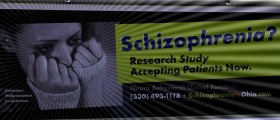
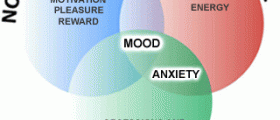
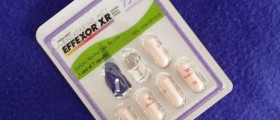






-When-You-Have-Parkinson's-Disease_f_280x120.jpg)


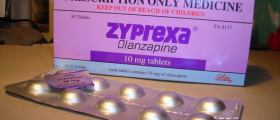

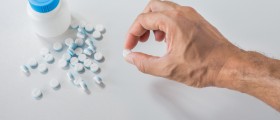
Your thoughts on this
Loading...